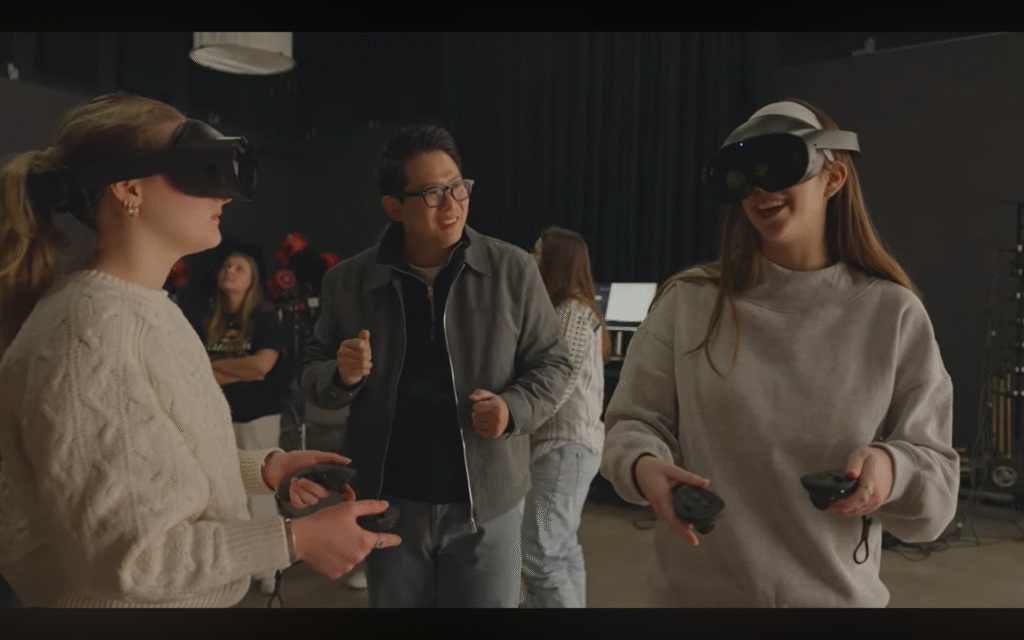Lab: BESTIE
Building Energy and Sustainable Technology for Indoor Environment

Juntae Jake Son, Ph.D.
Assistant Professor of Interior Design, LEED AP ID+C
Hello, I am an Assistant Professor in the Interior Design program at Ball State University. My research focuses on how nature’s survival strategies can be applied to solve human challenges. This knowledge is used to create new solutions for reducing energy consumption in both interior design and architectural environments.
Education
- Ph.D., Planning, Design, and Construction, School of Planning, Design, and Construction, Michigan State University. (2020)
- M.S., Civil and Environmental Engineering, Korea Advanced Institute of Science and Technology (KAIST). (2017)
- B.A., Interior Design, School of Planning, Design, and Construction, Michigan State University. (2014)
Course Taught at Ball State University
- IDES 116: Basic Design 1
- IDES 222: Interior Design Studio 1
- IDES 224: Interior Design Studio 2
- IDES 228: Design Technology 3
- IDES 312 (Previous IDES 114): Sustainable Interiors
- IDES 314: Lighting Technology 1
- IDES 315: Lighting Technology 2
- IDES 324: Interior Design Studio 3
- IDES 420: Interior Design Programming and Research
- IDES 601: Research Methods in Interior Design (Master’s program)
- IDES 613: Design Analysis (Master’s program)
Graduate Assistants & Undergraduate Researchers
- Currently Open for Graduate Assistant Position! Email me at jjson@bsu.edu
- Caleb Koch, Master Student in Urban and Regional Planning, FS 25
- Juliet Oluyale, M. Arch, Graduated, FS 22 ~ SS 25
- Gandzhina Gina Dustova, Ph.D, Graduated, FS20 ~ SS22
- Maria Musso, Undergraduate student, Architecture Program Student (Advising Capstone Project), FS 25 ~ Present
- Joel Asemota, Undergraduate student, Undergraduate Student Researcher (Teacher-Scholar Program), FS 24
- Karina Stoltz, Undergraduate student, Undergraduate Student Researcher (Pathways Undergraduate Research Fellowship), SS 23
- Karina Stoltz, Undergraduate student, Undergraduate Student Researcher (Teacher-Scholar Program), FS 22
- Kathryn Rockwood, Undergraduate student, Undergraduate Student Researcher (Teacher-Scholar Program), FS 22
Current Project Overview
Biomimicry in the Built Environment – Occupants’ Experience in Virtual Environment with a Novel Biomimetic Window System: This research is a continual improvement project following my previous research, “Finding a Novel Biomimetic Solution and Its Impact on Building Energy Consumption,” funded by an Aspire New Faculty Start-Up award. That project demonstrated the effects of biomimicry ideas to save building energy. Biomimicry is a term appearing from bios (meaning life) and mimesis (meaning to imitate) and was popularized by scientist and author Janine Benyus in her 1997 book, Biomimicry: Innovation Inspired by Nature. Learn More
Enhancing Historic Building Performance and Sustainability at Maplewood (Immersive Learning Grant): This project addresses the critical issue of building energy efficiency within a historic property, the Maplewood guest house, which is currently managed by Ball Brothers Foundation. Ball Brothers Foundation has entrusted the operation of Maplewood to Ball State to provide housing for Indiana University School of Medicine students. This project is an immersive learning experience designed for third-year Interior Design students (Juniors) at Ball State University. The students will conduct a thorough building energy analysis of the Maplewood guest house during the Spring and Fall 2025 semester. Learn More
Integrating 3D Modeling and Interactive Lighting in Interior Design Education: The goal of this project is to provide Interior Design students with the opportunity to bring their drawings to a real life by creating detailed 3D architectural models using tools such as laser cutters, 3D printers, and Arduino. This hands-on approach allows students to better understand their lighting designs. By integrating LED lighting into these 3D-printed models, the project aims to overcome limitations of traditional lecture-based education, offering a more dynamic, practical, and innovative method for students to engage with lighting design concepts. This real-world application adopts both technical proficiency and creative problem-solving skills. Learn More
Virtual Reality as a Tool for Psychological Engagement in Remote Work: As more businesses increasingly connect with people around the world and collaborate remotely, this enables collaboration across geographical boundaries and diverse cultural backgrounds. However, it also reveals significant communication barriers. Differences in time zones, cultural misunderstandings, and varying levels of technological access can be obstacles to effective communication (Gajendran & Harrison, 2007). Therefore, solving these problems is important for improving collaborative team engagement, intercultural communication, and productivity. Learn More
